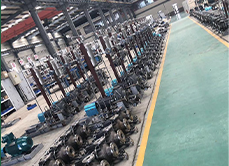Kannada
- Afrikaans
- Albanian
- Amharic
- Arabic
- Armenian
- Azerbaijani
- Basque
- Belarusian
- Bengali
- Bosnian
- Bulgarian
- Catalan
- Cebuano
- Corsican
- Croatian
- Czech
- Danish
- Dutch
- English
- Esperanto
- Estonian
- Finnish
- French
- Frisian
- Galician
- Georgian
- German
- Greek
- Gujarati
- Haitian Creole
- hausa
- hawaiian
- Hebrew
- Hindi
- Miao
- Hungarian
- Icelandic
- igbo
- Indonesian
- irish
- Italian
- Japanese
- Javanese
- Kannada
- kazakh
- Khmer
- Rwandese
- Korean
- Kurdish
- Kyrgyz
- Lao
- Latin
- Latvian
- Lithuanian
- Luxembourgish
- Macedonian
- Malgashi
- Malay
- Malayalam
- Maltese
- Maori
- Marathi
- Mongolian
- Myanmar
- Nepali
- Norwegian
- Norwegian
- Occitan
- Pashto
- Persian
- Polish
- Portuguese
- Punjabi
- Romanian
- Russian
- Samoan
- Scottish Gaelic
- Serbian
- Sesotho
- Shona
- Sindhi
- Sinhala
- Slovak
- Slovenian
- Somali
- Spanish
- Sundanese
- Swahili
- Swedish
- Tagalog
- Tajik
- Tamil
- Tatar
- Telugu
- Thai
- Turkish
- Turkmen
- Ukrainian
- Urdu
- Uighur
- Uzbek
- Vietnamese
- Welsh
- Bantu
- Yiddish
- Yoruba
- Zulu
Telephone: +86 13120555503
Email: frank@cypump.com
ಆಕ್ಟೋ . 20, 2024 20:31 Back to list
Understanding the Importance of Slurry Pump Liners in Pump Performance and Longevity
Understanding Slurry Pump Liners A Key Component in Slurry Pump Performance
Slurry pumps play a crucial role in industries such as mining, construction, and wastewater treatment by transporting mixtures of solids and liquids. One of the essential components of a slurry pump is the liner, which significantly influences the pump's efficiency and longevity. This article delves into the importance of slurry pump liners, their types, materials, and maintenance considerations for optimal performance.
What is a Slurry Pump Liner?
A slurry pump liner is a protective layer installed inside the pump casing that safeguards the pump from abrasive particles present in the slurry. The liner absorbs the wear and tear caused by the solid particles moving through the pump, ensuring that the more expensive components, like the impeller and casing, are protected from damage. Depending on the specific application, the design and material of the liner can greatly affect the pump's operating life and efficiency.
Types of Slurry Pump Liners
Slurry pump liners come in various designs, typically categorized into two main types hard liners and soft liners
.1. Hard Liners These are made from materials that can withstand the high abrasion associated with heavy-duty slurry applications. Common materials used for hard liners include high chrome iron and ceramic. They provide excellent resistance to wear and are ideal for applications involving coarse and highly abrasive slurries. However, hard liners may be more susceptible to cracking under impact conditions.
2. Soft Liners Soft liners, often made from rubber or elastomers, offer better flexibility and can handle impact better than their hard counterparts. They are less prone to cracking and can effectively absorb shock. While they may not last as long in heavily abrasive environments compared to hard liners, their ability to reduce vibration and noise makes them suitable for less abrasive applications.
Material Selection
Choosing the right material for a slurry pump liner is critical for optimizing performance. Here are some commonly used materials
- High Chrome Cast Iron Known for its excellent hardness and excellent abrasion resistance, high chrome cast iron is a popular choice for hard liners in industries like mining and mineral processing.
slurry pump liner

- Natural and Synthetic Rubber These materials provide good flexibility and resilience, making them suitable for applications where the impact of particles is a concern. Natural rubber can wear out faster in highly abrasive scenarios, while synthetic rubber compounds can be tailored for specific applications.
- Polyurethane This material combines the advantages of both rubber and hard liners, offering good wear resistance and flexibility. Polyurethane liners are preferable in situations where the slurry contains moderate abrasive materials.
Maintenance Considerations
To ensure the longevity of slurry pump liners, regular maintenance is essential. Here are some key maintenance practices
1. Regular Inspections Frequent visual inspections of the liners can help identify wear and tear early on. Look for signs of abrasion, cracks, or deformities. This early detection can prevent more significant issues down the road.
2. Proper Alignment Ensure that the pump components are properly aligned. Misalignment can create undue stress on the liners, leading to premature failure.
3. Fluid Properties Monitoring Understanding the characteristics of the slurry being pumped, such as pH, density, and temperature, can help in selecting the right liner material and adjusting maintenance practices accordingly.
4. Routine Replacement Depending on the application, regularly scheduled replacements of the liners can help minimize downtime and maintain pump efficiency.
Conclusion
Slurry pump liners are fundamental to the performance and longevity of slurry pumps. By understanding the types of liners, the appropriate materials, and the necessary maintenance practices, industries can ensure their pumps operate efficiently and effectively, reducing downtime and operational costs. Proper attention to liners not only boosts overall pump reliability but also enhances the entire slurry handling process, contributing to better productivity and efficiency in industrial operations.
-
Heavy-Duty Mining Sludge Pumps - Wear-Resistant Slurry Handling
NewsAug.02,2025
-
Horizontal Split Case Pump with GPT-4 Turbo | High Efficiency
NewsAug.01,2025
-
ISG Series Pipeline Pump - Chi Yuan Pumps | High Efficiency, Durable Design
NewsAug.01,2025
-
Advanced Flue Gas Desulfurization Pump with GPT-4 Turbo | Durable & Efficient
NewsJul.31,2025
-
ISG Series Vertical Pipeline Pump - Chi Yuan Pumps | Advanced Hydraulic Design&Durable Construction
NewsJul.31,2025
-
ISG Series Vertical Pipeline Pump - Chi Yuan Pumps | Energy Efficient & Low Noise
NewsJul.31,2025










